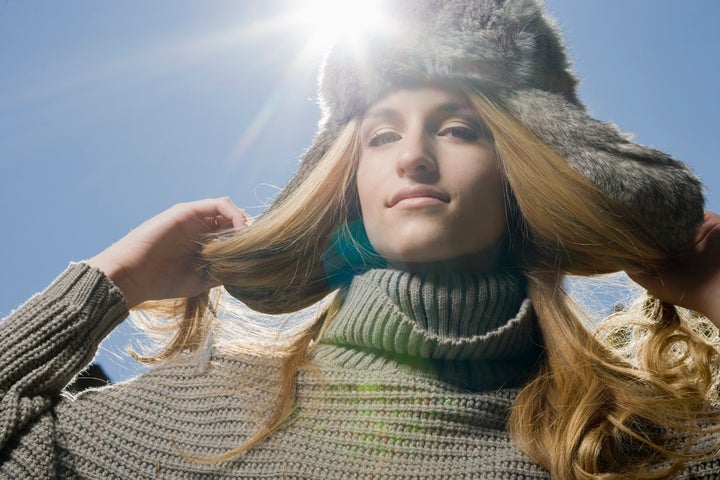You may tend to ease up on applying sunscreen now that cooler weather has arrived and you won't be basking in the sunshine. But here's the thing: you absolutely need sun protection during the winter.

“Don’t be misled by the dropping temperature,” said Bruce E. Katz, the director of JUVA Skin & Laser Center in New York. “The sun’s harmful rays are just as strong and damaging despite what your thermometer says ― particularly the UVA rays which are responsible for aging skin. UVA radiation reaches deeper into the skin and contributes to wrinkles and skin cancer risk. Nearly all (95 percent) of the UV radiation that we are exposed to is UVA.”
Alex A. Khadavi, the founder of Advanced Skin & Hair, said, “Reflection of radiation from snow requires aggressive sunscreen protection, maybe even more than summertime as individuals participate in snow activities like skiing and snowboarding. Almost 80 percent of UV radiation is reflected from snow while only 25 percent from sand.”
If that doesn’t convince you to keep slathering on sunscreen into the cold-weather months, read on for five need-to-know tips on exactly how to protect your skin from winter sun damage.
1. Reconsider physical sunscreen (as opposed to chemical sunscreen).
Physical sunscreens deflect or block the sun’s rays, whereas chemical sunscreens absorb the sun’s rays. While physical sunblock ― which contains zinc oxide and titanium dioxide ― may be messy to apply, it offers the best year-round protection.
″[Physical sunscreen] provide better broad spectrum coverage as compared to chemical-based sunscreen which are usually either UVB or UVA blockers,” said Khadavi. “Additionally, physical blockers work for a longer period of time giving longer coverage, requiring less re-application. They are also less irritating than chemical blockers.”
2. Beware of suncreen’s archenemy: sweat. “Many think that simply applying your daily SPF moisturizer once in the morning is sufficient for a day’s worth of coverage,” said Katz. “If you are outdoors and bundled up, your skin still sweats and SPF needs to be reapplied throughout the day.”
Be sure to continuously smooth on a naturally healing and moisturizing sunscreen with a minimum of SPF 30, and allow it to fully absorb into your skin before leaving home.
3. Those may not be just any old spots. “Freckles, age spots, spider veins on the face, rough and leathery skin, fine wrinkles that disappear when stretched, loose skin, a blotchy complexion, and actinic keratoses (thick wart-like, rough, reddish patches of skin) can all be traced to sun exposure. The sun also attacks the skin’s elastin, weakening the skin from springing back, and causing wrinkled and leathery skin,” said Katz. “During the winter, look out for any rough, red skin, an increase in moles and broken blood vessels on the face to detect sun damage. Also, be aware of any cuts or bruises on your skin that are not healing as this may be an early sign of skin cancer.”
4. Protect your pucker. Windburn lips can be a pain, but to prevent this apply a soothing lip balm with sunscreen. We recommend Supergoop! Acai Fusion Lip Balm because it has a paraben and fragrance-free formula with SPF 30+.
5. Enhance your sun protection with the right foods. “In general, fruits and vegetables are foods high in antioxidants and help us fight free radicals and sun damage, while foods such as meat, dairy products, simple carbohydrates, sugar and processed foods cause inflammation and can contribute to making sun damage worse,” said Dr. Katz.
According to Dr. Khadavi, foods like leafy greens, peppers, squash, watermelon, blueberries and tomatoes that are rich in vitamin C, and antioxidants such as carotenoids and lycopene, can help prevent sun damage.